#ayse sultan daughter of mustafa ii
Text



This red and golden kaftan was first worn by Ayşe Sultan in the thirty-second episode of the fourth season of Magnificent Century.
It is seen again on Şehzade Mustafa (later Sultan Mustafa I) in the ninth episode of the first season of Magnificent Century: Kösem. The kaftan was also worn by Şehzade Süleyman (later Sultan Süleyman II) in the twenty-seventh episode of the second season.
#Muhteşem Yüzyıl#Muhteşem Yüzyıl: Kösem#Magnificent Century#Magnificent Century Kösem#Magnificent Century Kosem#period drama#costume drama#historical drama#Ayşe Sultan#Ayse Sultan#Ayşe Sultan (Daughter of Şehzade Bayezid)#Şehzade Mustafa#Sehzade Mustafa#Mustafa I#Şehzade Mustafa (Son of Halime)#Şehzade Süleyman#Sehzade Suleyman#Süleyman II#Şehzade Süleyman (Son of Dilaşub)#reused costumes#recycled costumes
8 notes
·
View notes
Text

~Mahidevran Gülbahar~
She was born around 1500, her origin is unknown but most historian claim that she was albanian, montenegrian or even circassian. Her name
Mahidevran means the one who is always beautiful and the name Gülbahar which is perhaps her converted name means rose of springs. Mahidevran was listed among 17 women in prince Süleyman's harem in Manisa. In an register she appears as gözde (favorite) together with three other women named Yasemin, Hubeh, Server. Those three recived a salary 5 aspers a day and Mahidevran recived 4 aspers a day.
The reason is unknown but maybe she was the new one at the time. In 1515 Mahidevran gave birth to her only child Mustafa. In 1521, when Süleyman ascended the throne, Mahidevran along with other concubines moved from Manisa to Istanbul. Mustafa was third child and second son of Süleyman. In autum 1521
Süelyman's three childern, eldest son Mahmud, daughter Raziye and baby Murad died because of plague. Mustafa and Mehmed (son of Hürrem) survived. Thus, Mahidevran was the mother of the eldest living son and "first" consort. Till the moment when Sultan Suleyman broke the one mother-one son policy and called back Hürrem, the mother of prince Mehmed. No doubt that concubines and their childern were rivals with other concubines and kids but Mahidevran's and Hürrem's relationship worsened.
Suddendly, Mahidevran was again outranked, but this time by woman who was below her. It was never the affection that Süleyman showed towards Hürrem it was the ranking. But Mahidevran and Hürrem had to tolerate eachother thanks to Valide Ayse Sultan who had cordial relationship with both of them. In 1533
Mustafa was appointed to Manisa and as the tradition says, his mother moved with him. Later, in 1542 when Mustafa was appointed to Amasya, Mahidevran moved once again. In 1553 Sultan Süleyman I executed his and Mahidevran's son Mustafa. Mahidevran moved to Bursa and thus she was the last concubine to retire in Bursa.Sultan Süleyman made Mahidevran responsible for all Mustafa's mistakes and took all her wealth and salary away. Mahidevran lived in poverty for many years till the moment when prince Selim in 1560s started to send her money. With that money she could pay finishing Mustafa's Türbe. Selim II payed her debts and bought her a house with garden. Mahidevran died on 3th February 1581 in Bursa.
youtube
17 notes
·
View notes
Photo





𝐈𝐧 𝐭𝐡𝐞 𝐦𝐨𝐧𝐭𝐡 𝐨𝐟 𝐀𝐩𝐫𝐢𝐥 𝐢𝐧 𝐎𝐭𝐭𝐨𝐦𝐚𝐧 𝐡𝐢𝐬𝐭𝐨𝐫𝐲
#history#historyedit#ottoman history#ayse sultan daughter of murad iii#haseki hurrem sultan#nazikeda kadin#emetullah sultan daughter of mustafa ii#saliha sultan daughter of ahmed iii#alicenab kadin#sah sultan daughter of mustafa iii#sehsuvar sultan#ayse sultan daughter of mustafa ii#fatma sultan daughter of mahmud ii#ottomanladiesedit#*everymonth#abdulhamid i#abdulhamid ii#murad iv#selim i#abdulmecid i
158 notes
·
View notes
Text
Sultanate of Women (3/7)
Nurbanu Sultan (c.1525/ 7 December 1583)


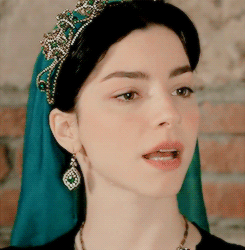
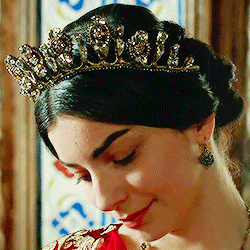
Daughter of Nicolo Venier and Violanta Baffo
Haseki Sultan (Legal Wife) of Sultan Selim II and Valide Sultan of Sultan Murad III
Mother of Sultan Murad III, Sah Sultan, Ismihan Sultan, Gevherhan Sultan, and Fatma Sultan
Grandmother of Sultan Mehmed III, Sehzade Mahmud, Sehzade Mustafa, Sehzade Oman, Sehzade Bayezid, Sehzade Selim, Sehzade Cihangir, Sehzade Abdullah, Sehzade Ahmed, Sehzade Yakub, Sehzade Alemsah, Sehzade Yusuf, Sehzade Hüseyin, Sehzade Korkud, Sehzade Ali, Sehzade Ishak, Sehzade Alaeddin, Sehzade Davud, Sehzade Suleiman, Sehzade Yahya, Hümasah Sultan, Ayse Sultan, Fatma Sultan, Mihrimah Sultan, Rukiye Sultan, Mihriban Sultan, and Fahriye Sultan.
Mother-in-law of Çakırcıbaşı Hasan Pasha, Zal Mahmud Pasha, Sokullu Mehmed Pasha, Kalaylıkoz Ali Pasha, Safiye Sultan, Piyale Pasha, Cerrah Mehmed Pasha, and Kanijeli Siyavuş Pasha
Fun Fact For Newbies: Nurbanu Sultan was born Cecilia Venier-Baffo
44 notes
·
View notes
Photo






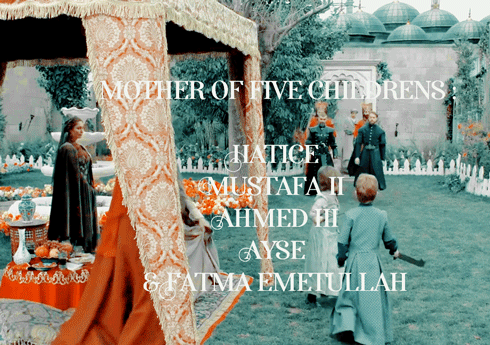

woman that i love: [2/5]
↠ emetullah rabia gulnus sultan
↠ haseki & valide sultan of the ottoman empire
Born around 1642 under the name Evmania Vorya, popular folklore says that she was the daughter of an Orthodox bishop, descendant of the Verzzini family who founded the town of Rethmyno in Crete.
According to tradition, she and her two sisters were captured at the start of the Cretan War, around 1646. Her two sisters were bought by Pasha at the Istanbul market, while Gulnus was sold for the imperial harem
Educated in the harem, which renamed her (perhaps) Emetullah Rabia Gülnus, she became, at an unknown date, Mehmed's concubine. The Venetian ambassador described her as a tall, slender woman with black curly hair and blue eyes.
She gave him her first child: a daughter, Hatice, around 1660, then her first son, Mustafa, in 1664. Of a total of five children, four will reach adulthood (only Ayse died in childhood)
After Mustafa’s birth, Gülnus was named Haseki Sultan. She was the only (or one of the very few) haseki to accompany her husband on military campaigns, and far from the battlefields, she was known to join him on his hunting parties. Mehmed insisted each time, to take her with him. Subject of contemporary European engravings, she was drawing riding a horse. His son, Ahmed, was the first sultan born outside of Turkey, in the present-day Bulgaria, in December 1673.
A myth on Ottoman empire was the possibly rivalry between Gülnus and the concubine Gülbeyaz and possibly lead the murder of that concubine. If rivalry was largely possible, murder seem exagerate or invented.
Following the deposition of Mehmed IV, Gülnus was exiled in the old palace and separated from his sons. Afife Kadin wrote in her poems that she regularly heard Gülnus screaming and crying between the walls of her room.
After the reigns of Ahmed II and Süleyman II, in 1695, Gülnus became Valide Sultan for his eldest son. Unfortunately, it is deposed in 1703 and Gülnus confirms the deposition. Ahmed succeeds his brother. To calm the people angry with the Valide Sultan, he exiles him briefly to the Old Palace.
In 1711, it was she who persuaded Ahmed to declare war on Russia after two years of propaganda in favor of an alliance with the Swedish king Charles XII. Gülnus persuaded his son that the king was a man worth taking a risk.
Emetullah Rabia Gülnus died of illness in 1715, possibly at the age of seventeen.
#get to know me#emetullah rabia gulnus sultan#ottoman empire#sultanate of women#*mine#*women that i love#history#ottoman history
83 notes
·
View notes
Text
Portrait of Safiye Sultan / Safiye szultána portréja
Origin and upbringing
Safiye was most probably born in the late 1540s or in 1550 in the area of nowadays Albania in the mountainous region. Most of Albania by then lived in peace with the Ottomans and embraced Islam, but the mountains did not, so atrocities continued to occur here. Perhaps during such an incident, they took the child Safiye away. Many sources mention that she was Venetian, but it has now proved that these sources confused her with her mother-in-law, Nurbanu.
When Safiye arrived to Istanbul, she soon moved into the household of Sultan Suleiman’s granddaughter, Hümaşah Sultan. Hümaşah was slightly older (born in 1543) than Safiye, but there was a relatively small age difference. Exactly how Safiye got into Hümaşah’s household is unclear, as is her exact role. She may have been a mate, a companion, or a simple servant. In any case, Hümaşah quickly recognized the girl's talent because she began to deal with her proper education, and so around 1560 Safiye could already be considered a real grand prize among the concubines. The concubines raised by the sultanas were particularly well-mannered, intelligent, and beautiful, so a very bright future awaited them in general. It was no different for Safiye. She also probably got her name from Hümaşah, Safiye meaning "pure."
The young consort
Hümaşah carefully chose who to gift Safiye to. Eventually, her cousin Murad was chosen. The exact time of the gift is not known, but it can probably happened after the battle between Prince Bayezid and Prince Selim. For as long as the question of inheritance was not certain, it would have been a mistake to give such a great gift to someone who might face an execution squad soon. Thus, presumably in 1562, Safiye was gifted to the future Sultan Selim II's son, Murad.
Murad certainly immediately fell for her, as by a rapid succession, by 1566, they had two children. Their first child, a little girl, was named Hümaşah, after Murad's cousin and was probably born in 1564. She was followed by Safiye's first son, Mehmed in 1566. Sultan Suleiman died that year and it brought many changes in Safiye’s life. On the one hand, she got rid of her mother-in-law, as Nurbanu immediately traveled to Istanbul as Sultan Selim’s Haseki, and Safiye became the highest-ranking woman in Murad’s harem. The relationship between Nurbanu and Safiye is still known today as one of the worst mother-in-law and daughter-in-law relationships. However, the first few years they spent living together were probably not as brutal as their later relationship.
Although Murad payed special attention to Safiye, their relationship was not entirely monogamous, for another concubine — a girl raised by a very influential kalfa — also gave birth to a son for Murad, Selim in 1567. He was followed by Safiye's second son, Mahmud in 1568, and was followed by two more daughters, Ayse (around 1570) and Fatma (mid / late 1570s). With the exception of the birth of Prince Selim, Murad seems to have tried to devote all his attention to Safiye, since no other child was born from different women. Their almost monogamous relationship also suggests that Murad and Safiye have become very close during their years in Manisa, and Safiye has certainly taken the place of Nurbanu in supporting Murad as well. It was for this reason that Murad’s accession to the throne seriously affected their lives.

Haseki Safiye Sultan
Selim II died in 1574 and Murad became the new sultan. Safiye and her children immediately traveled to the capital to settle next to Murad. Almost as she arrived in Istanbul, Safiye immediately received the Haseki rank and a salary of 800 asperes per day. However, her new life in Istanbul also meant that Nurbanu, deeply loved and revered by Murad, would be part of their lives again. For the first few years, even if there were tensions in the harem, there was no open fight between the two women. However, Safiye sought to gain political power, which was a completely logical move as the mother of princes. However, Nurbanu did not appreciate her daughter-in-law's aspirations in political life, nor her attempt to influence Sultan Murad.
The relationship between the two women then became worse with the death of Safiye's younger son, Mahmud around 1580. Murad's other son, Prince Selim was probably in poor health, perhaps with some long-term illness. Thus the empire actually had a single heir, Safiye's eldest son, Mehmed. However, Mehmed had not yet been circumcised, it was not sure he would be able to have children, so it became more and more urgent for Murad to produce new heirs. However, Safiye had been struggling with infertility problems for years. She had a hard time getting pregnant, and if she did, she had miscarriages soon or the children were born prematurely. Taking advantage of this, Nurbanu tried to send new concubines to her son, who, however, rejected everyone because he was in love with Safiye. This situation certainly increased the tension between the two women, but that was by no means the peak.
In 1582, Nurbanu was confronted with the Grand Vizier, Sinan Pasha. For Sinan Pasha dared to say publicly that it was not Nurbanu who ruled the empire, but the sultan's concubine, Safiye. Sinan Pasha and Nurbanu never liked each other, which is why Sinan became a supporter of Safiye. However, Sinan not only insulted Nurbanu with this statement, but also the sultan himself, and even degraded the role of mothers, for which he received a rather negative reception, and even losing his position. Nurbanu (and Murad) may have seen Safiye behind Sinan Pasha's actions (which was either true or not), and this made Safiye's situation worse.
Maybe Murad lost some faith in Safiye after the events, but stayed loyal to her. The reason Murad rejected all other women may have been partial impotence. He was not able to have sex with any other concubine except Safiye. Because of this, the rumor that Safiye would make the Sultan impotent with witch-craft took off. Nurbanu, taking advantage of the rumors (or spreading them herself), tried to persuade Murad to exile Safiye. Eventually, Nurbanu successfully received a letter that was a reply letter from a healer woman to Safiye writing about aphrodisiacs. Based on the letter, it seemed that Safiye could have complained about Murad's problem to the woman, hoping for help. Nurbanu immediately showed Murad the letter. Offended by his masculinity, Murad - who tended to believe in witchcraft, astrology, so presumably seriously believed the rumor - finally, in early 1583 (or even in 1582), actually banished Safiye to the Old Palace. The exile was preceded by the torture and exile of Safiye's close friends and servants. Safiye was thus eventually left completely alone without her children and moved to the Old Palace. Although her children — especially her son Mehmed — fought hard for her return, they did not reach their goal. Moreover, the relationship between Mehmed and Murad has become life-threatening. In Safiye's absence, Murad, recovered from his impotence, received more and more concubines and gave produced an astonishing number of children. However, his mother died at the end of 1583 and the sultan was left alone.

The big comeback
Murad recalled Safiye to Topkapi Palace in 1584 and from then on, although he was not loyal to her, he treated her and became her companion. By then, Safiye had maybe been disillusioned with Murad and was only interested in gaining power. Maybe that’s why she didn’t show any jealousy towards Murad’s other concubines and pretended not to be disturbed by Murad’s playground in the harem. The act (if it was an act and not a sincere adherence to the sultan) eventually proved successful, as Murad discussed all matters with Safiye and let her gain power. It was during this period that Safiye also built her own all-intertwined relationship system and began to immerse herself in every corner of politics.
Murad, to compensate for the previous exile, planned to marry Safiye, however, it is questionable whether the marriage ever happened or not. In June 1585, the marriage had certainly not yet taken place, for the ambassador, Morosini, clearly writes in his account that the sultan had not paid the usual dowry. However, historian Mustafa Ali notes that at the end of 1585 the sultan did pay the dowry and married Safiye. The Sultan's personal physician had a similar view. Moreover, in October 1585, the Venetian bailo received news through Safiye's kira, Esther Handali, that the sultan's daughter, Ayşe will be married off, and that the sultan himself would marry Ayşe's mother. The Venetian bailo sent chairs as gifts to the sultan and sultana. Safiye responded to the letter on December 24, thanking him for the gifts. The marriage could not be concluded until the spring of 1586 when the Venetian Senate also congratulated the Sultan and Safiye. Safiye herself thanked them in another letter in April of that year.
So Safiye spent the second half of the 1580s, returning from exile, resurrected from her ashes, successfully and happily. Although many did not like her for doing little charity, the information left to us still gives us the image of a caring woman. Although she really spent little on charity (at least based on the information left over), she was very generous and kind to her friends. Her close friend, her kira, Esther Handali, for example, became ill in 1588 and the sultana had sent her letters, food, and doctors on a daily basis. It is clear from the letters that Safiye felt sincere concern for Esther, who passed away in December 1588, regardless of thorough treatment.
As much as Safiye could hate her mother-in-law, she continued her pro-Venice policy. She also stood openly in front of Murad for the sake of Venice as Haseki. And although she was able to influence the sultan in many ways, she did not always manage to shape the events according to her own taste. Thus, for example, in 1593 she tried to convince Murad, in favor of the English ambassador she had favored. However, Murad hardly listened, already rejecting Safiye's offer. Thus, although her power and influence grew during Murad's reign, the Sultan set serious boundaries for her.

Valide Safiye Sultan
Murad III died in 1595, so Safiye's son Mehmed took power. Under Mehmed's reign, Safiye herself reached the pinnacle of her influence and power. Committed to his mother to the extreme, the new sultan essentially allowed his mother to rule and gain influence. From then on, no one and nothing could set a limit to Safiye’s will. With the support of the chief eunuch, Gazanfer Agha, Safiye ruled the empire essentially through her son. This was greatly shown in 1596, when the Sultan himself, traveling on a campaign, made his mother the head of the treasury. So no one could do anything in the capital, or even in the whole empire, without Safiye's permission. In the absence of her son, Safiye also raised her own salary to 3,000 aspers per day. It was also at this time that he openly humiliated the Grand-Vezir after he began to pester prostitutes in the absence of the sultan. Safiye immediately sent a message to the Vizier to stop working with prostitute matters, as his son had not left him Istanbul to deal with whores.
Safiye learned not only from her mother-in-law's successes but also from her mistakes. Thus, in addition to pursuing a policy similar to that of her mother-in-law, Safiye, unlike her mother-in-law in the harem, ordered every woman who wanted to gain power to stop at the first moment. During Mehmed's reign, none of his concubines could rise to the rank of Haseki, and none of his concubines could gain political influence. Mehmed had two main concubines, Handan, who was raised by the sister of the late Sultan Murad; and Halime, a simple concubine. The former also won Safiye's sympathy, but the latter, given that Mehmed was very fond of her, won Safiye's hatred. In the harem, however, Gazanfer Agha maintained order and did not allow either Safiye or the concubines to act at the expense of each other.
Unlike the harem, no one in political life set a barrier for Safiye. Following the paths of his predecessors, Hürrem and Nurbanu, Safiye also wanted to correspond with a European ruler. In her case, luck and diplomatic sense made it possible to her to exchange letters with Queen Elizabeth I of England. Correspondence was certainly political at first, but over time it became much friendlier. They also sent each other gifts on a regular basis. Safiye’s adoration for England was so deepened that she wanted to meet one of the influential English ambassadors in a private audience. The meeting was almost established, but in the end, Mehmed made it impossible and forbade his mother, as such a meeting would have been immoral. From this event, then, rumors arose that Safiye and the English ambassador were lovers. But not only was the ambassador who was said to be Safiye's lover some also said he had an affair with her kiras Esther Handali, and Esperanza Malchi. The rumors circulating around her make it clear that she was not the most popular sultana.

The failed construction project
Her predecessors all carried out huge construction projects and extraordinary charities. Safiye also wanted to create something lasting, which is why she wanted to build a huge mosque complex with a mosque, soup kitchen, and hostel in the Eminönü district. This quarter was inhabited mainly by Jews at that time, so a mosque would have been of special importance here. She began the construction in 1598, but soon the capital had to face uprisings, so construction came to a halt when it was only held at the level of the first windows. Later, Turhan Hatice Sultan completed the building.
Although her biggest construction project, which with his soup kitchen might have won people’s love, failed, she also had other, more successful projects. In Karamanli, which is located in today's Üsküdar, she successfully made a fountain and masjid. She also successfully continued to build a mosque in Cairo that was begun by the black eunuch, Osman Agha, who passed away in 1603. This mosque is still known today as the Melike Safiye Mosque.
The hated woman
Safiye was never popular and it didn't seem to really bother her. Maybe she was angry at the people because of the rumors of the early 1580s? Maybe she didn’t want to care about people who turned against her for no reason before? Maybe she just wasn’t interested in charity? Either way, her unpopularity grew steadily, then culminated in 1600 with a sipahi rebellion. In March, after the Sultan distributed the soldiers' fee among the statesmen, the sipahis demanded the heads of all the rich, corrupt statesmen (and women) from the sultan and wished the death of Safiye Sultan also. Eventually, the sultan managed to reassure the soldiers, though several of his supporters had already fallen victim to them by that time, such as Esperanza Malchi, Safiye’s close friend and kira. Either way, Mehmed was finally able to save the lives of his mother and Gazanfer Agha. Safiye was inconsolable with Esperanza's death and demanded that the murder of the woman be avenged. However, Mehmed was so afraid - rightly - of the soldiers that he confronted his mother in an unusual way and exiled her to the Old Palace for some time. However, the exile only served to reassure the soldiers and Safiye soon returned.
Not learning from the threat from the soldiers, Safiye and her men continued to live on a large scale and did corruption, so perhaps unsurprisingly, another revolt in 1601 shook the capital. Then on March 21, the sipahis again demanded the death of Gazanfer Agha, for he was hated even more than Safiye. The soldiers sent a delegation to the sultan, demanding that he oust Gazanfer, as his excessive influence and corruption are dangerous and if the sultan does not act the way they want, he could easily fall victim to dethronement. Mehmed frightenedly agreed to extradite Gazanfer, but then Safiye Sultan, Grand Vizier Damad Ibrahim Pasa, and Yemişci Hasan Pasa convinced the Sultan not to betray his faithful friend, who was otherwise indispensable to the empire. The chief mufti, Sunullah Efendi - who, by the way, secretly supported the uprising - eventually persuaded the soldiers to leave Gazanfer Agha because the agha promised that he would no longer behave in a corrupt manner.
Safiye and her men continued to annoy the soldiers, which in 1603 brought fatal consequences for the life of the dynasty. In January, another revolt took place against Mehmed. At this time, however, in addition to the sipahis and the ulema, the janissaries joined the rebellion also and on January 6 they captured Gazanfer agha along with the chief black eunuch, Osman, and dragged them out of the palace all the way to Topkapi's third gate, where they were beheaded in front of both the crowd and the sultan. Although Safiye escaped the events, she lost one of her most important supporters, Gazanfer.

The wicked grandmother
Gazanfer was the only person who could keep order in the harem. However, with his death, hell broke loose in the harem, the Safiye - Handan duo openly confronted Halime, the mother of the eldest prince. Prince Mahmud, the son of Halime, enjoyed the support of the soldiers, which did not help him develop a good relationship with his father. In addition, due to the reckless nature of the prince, he performed several acts that provoked the anger of his father. In addition, it is not a negligible fact that Mahmud spoke openly against Safiye several times. He claimed that his grandmother’s activities were very detrimental to the empire and that his father was essentially a puppet in the hands of the valide. That is why Mahmud was so popular among soldiers and commoners and was so feared and hated by his grandmother.
Legend has it that Mahmud’s mother, Halime, sent a letter to a seer in 1603 to ask if her son would ever rule the empire. However, Safiye grabbed the reply letter and suspected Halime and Mahmud that they had conspired against the sultan. The letter is either real or just a legend, it is certain that Halime and Mahmud were accused of treason, their servants were tortured until they testified against them. And knowing these confessions, the sultan sentenced his own son, Mahmud, to death. All the ambassadors present during the events in the capital believed that Safiye was behind Mahmud's execution. As this was also reported by the pro-Safiye Venetian and English ambassadors, she certainly was behind the execution. Safiye, however, cannot clearly become an evil grandmother in our eyes. We must see that the Valide Sultan had only one role in life to protect her son, and Mahmud posed a serious threat to Mehmed, so his execution was inevitable in Safiye's eyes. At the same time, we cannot rule out that Safiye executed Mahmud only in her own interests, since Mahmud's accession to the throne would have ended her own rule. She could have hoped that if she supported Ahmed, the shy prince, she might be able to retain her power and influence.
Following the execution of Mahmud, Safiye took Prince Ahmed with her to the Golden Horn Bay to watch a state ceremony together. In doing so, in fact, Safiye publicly introduced Ahmed as heir to the throne and as her own chosen one. In addition, Sultan Mehmed also made several provisions that allowed Ahmed, as his heir, to go with him everywhere, including to the mosque, divan, and wherever the sultan went. Safiye might have thought Ahmed would be forever grateful to her for making him heir to the throne, but life didn’t quite bring it that way.

Farewell to Topkapi Palace
Safiye's son Mehmed died in December 1603 and Prince Ahmed ascended the throne at the age of just 13, still uncircumcised. As an accession gift, Ahmed gave a luxurious gift to three women close to him: of course, his mother, Handan, his grandmother, Safiye, and Gevherhan Sultan, who raised his mother. All three women received rare fur-trimmed dresses. Safiye might have thought this gift would seal her future and, like her son, her grandson would hold her in great love and respect and allow her to rule. However, Ahmed and Handan did not think so.
Although the legend holds that Ahmed and Handan betrayed Safiye when she was exiled to the Old Palace on January 9, 1604, they were certainly not driven by personal emotions. The political situation was very fragile, the soldiers had not yet decided whether to like the new sultan or not. Ahmed, to win the love of the soldiers, sent Safiye, who the soldiers hated so much, to the Old Palace. This was part of a natural process anyway, as with the death of the Sultan, his entire harem (mother, concubines, daughters, wives) moved to the Old Palace according to tradition. And Safiye, like the mother of the late Mehmed, belonged to the Old Palace.
So Safiye returned to the Old Palace for the third time on January 9, 1604, this time permanently. However, she left Topkapi in a rather extreme and peculiar way. Most of the Topkapi harem were loyal to her and those who did not, were bought to be loyal. Thus, on her departure, almost the entire harem (including servants) followed her in voluntary exile. But that was not enough for Safiye, as she ordered her servants to destroy the harem. All the windows were broken and other damages were done before they left Topkapi Palace forever. And on the way to the Old Palace, Safiye sobbed so theatrically loudly in her carriage that even the people who otherwise hated her felt sorry for her. So the Valide Sultan left the Topkapi in a really stylish way, losing her influence for a lifetime.
The damage to the harem was, by the way, so great that the Grand Vezir did not believe the estimated repairing cost the chief eunuch said to him, so he asked to be able to enter and see the damages by himself. Thus, for the first time in the history of the empire, the Grand Vezir received permission to enter the harem (which was almost completely empty and uninhabitable anyway). In the end, at the cost of lengthy work and huge costs, they managed to restore the valide's apartment and the rest of the harem.

Last years
With Safiye's "exile," Ahmed became very popular among the people and although he no longer sent expensive gifts to his grandmother, they probably kept in touch. This is also indicated by the fact that Sultan Ahmed’s favorite concubine, Kösem, often visited Safiye with her children. So Safiye certainly spent her last years in peace and comfort, but without any political influence within the walls of the Old Palace.
The exact time of her death is unknown, but it is certain that she was still alive during Osman II's rule, but when Murad IV ascended the throne, she presumably was dead. This suggests that she died around 1620, beyond her seventies.
Safiye was one of the most divisive personalities of all sultans, a truly special, unique woman who was perhaps not an example of charity and kindness, yet she was one of the most colorful figures in the history of the empire with her theatrical and indifferent nature. She saw seven sultans on the throne, as much as another sultan besides her, Kösem. Safiye came to the empire, became the concubine of Prince Murad, and became a mother during Suleiman I's reign; then, under the reign of Selim II, she became the head of the Manisa harem of Murad; during her sweetheart, Murad's reign, she was a Haseki Sultan, she traveled to heaven and hell; beside her son, Mehmed III, she surpassed all her predecessors and became the most influential woman in the empire; during the reign of her grandson, Ahmed I, she was forced to break with his previous life forever; during her other grandson, Mustafa I's reign she may have been worried, as Mustafa was the full-brother of Mahmud and was ruled by his mother, Halime; then, with the dethronement of Mustafa I, during her great-grandson, Osman II's reign, she was able to live in relative peace. The accession of Osman II perhaps brought a little light into the last months of the old sultana, since he regularly visited Old Palace.

Used sources: L. Peirce - The imperial harem; M. P. Pedani - Safiye's household and Venetian diplomacy; G. Junne - The black eunuchs of the Ottoman Empire; G. Börekçi - Factions and favourites at the courts of Sultan Ahmed I (r. 1603-17) and his immediate predecessors; Necdet Sakaoğlu - Bu Mülkün Kadın Sultanları
* * *
Származása és neveltetése
Safiye minden bizonnyal a kései 1540-es években születhetett a mai Albánia területén a hegyvidéki területeken. Albánia nagyrésze addigra már békében élt az oszmánokkal és felvette az iszlám vallást, a hegyvidékek azonban nem, így itt továbbra is előfordultak atrocitások. Talán egy ilyen során ejtették fogjuk a gyermek Safiyét. Sok forrás emlegeti velenceinek, azonban mára kétséget kizáróan bebizonyosodott, hogy ezen források csupán anyósával, Nurbanuval keverték össze.
Safiye Isztambulba kerülve hamarosan Szulejmán szultán unokájának, Hümaşah szultánának a háztartásába került. Hümaşah szultána valamivel idősebb volt (1543-ban született) Safiyénél, ám viszonylag kis korkülönbség volt. Az, hogy pontosan hogyan került Safiye Hümaşah háztartásába nem tisztázott, mint ahogy pontos szerepe sem. Elképzelhető, hogy játszótárs, társalkodó vagy egyszerű szolgáló volt. Mindenesetre Hümaşah gyorsan felismerte a lány tehetségét, mert foglalkozni kezdett a megfelelő oktatásával és így Safiye 1560 körül már igazi főnyereménynek számíthatott az ágyasok között. A szultánák által kinevelt ágyasok különösen jól neveltek, intelligensek és szépek voltak, így általában igen fényes jövő várt rájuk. Safiye esetében sem volt ez másképp. Nevét is valószínűleg Hümaşahtól kapta, a Safiye jelentése "tiszta".
Az ifjú ágyas
Hümaşah alaposan és körültekintően választotta ki, hogy kinek ajándékozza Safiyét. Végül unokatestvérére, Muradra esett a választása. Az ajándékozás pontos ideje nem ismert, ám valószínűleg akkorra tehető, amikor már Bayezid herceg és Szelim herceg harca egyértelműen eldőlt. Amíg ugyanis nem volt biztos a trónöröklés kérdése hiba lett volna egy ilyen nagyszerű ágyast odaajándékozni valakinek, aki talán hamarosab kivégzőosztaggal néz szembe. Így tehát feltehetőleg 1562-ben került Safiye a leendő szultán II. Szelim fiának, Muradnak háremébe.
Murad minden bizonnyal azonnal a szívébe zárta a lányt, hiszen gyors egymásutánisággal 1566-ig két gyermekük is született. Első gyermekük, egy kislány, Murad unokatestvére utána a Hümaşah nevet kapta és valószínűleg 1564-ben született. Őt követte első fiuk, Mehmed 1566-ban. Ebben az évben hunyt el Szulejmán szultán és ez sok változást hozott Safiye életében. Egyrészt megszabadult anyósától, hiszen Nurbanu Szelim szultán kedveseként azonnal Isztambulba utazott, Safiye pedig Murad háremének legmagasabb rangú asszonya lett. Nurbanu és Safiye viszonya a mai napig az egyik legrosszabb anyós-meny viszonyként ismert. Azonban az első néhány év, melyet együtt élve töltöttek valószínűleg még nem volt annyira brutális, mint későbbi viszonyuk.
Murad bár kiemelt figyelmet szentel Safiyének nem volt teljesen monogám a kapcsolatuk, ugyanis egy másik ágyas - egy igen befolyásos kalfa által kinevelt lány - szintén fiút szült Muradnak, Szelimet 1567-ben. Őt követte Safiye második fia, Mahmud 1568-ban, őt pedig két további lány Ayse (1570 körül) és Fatma (az 1570-es évek közepén/végén). Leszámítva Szelim herceg születését, úgy tűnik Murad igyekezett minden figyelmét Safiyének szentelni, hiszen nem született mástól gyermeke. Szinte monogám kapcsolatuk is arra utal, hogy Murad és Safiye igen összeszoktak a Manisában töltött évek során és minden bizonnyal Safiye átvette Nurbanu helyét Murad támogatásában is. Épp emiatt Murad trónralépése komolyan befolyásolta életüket.

Haszeki Safiye Szultána
II. Szelim 1574-ben elhunyt és Murad lett az új szultán. Safiye gyermekeivel együtt azonnal a fővárosba utazott, hogy Murad mellett telepedjen le. Safiye szinte ahogy Isztambulba ért, azonnal megkapta a Haseki rangot és hozzá kimagasló napi 800 asperes fizetést. Azonban új isztambuli élete azt is jelentette, hogy a Murad által mélységesen szeretett és tisztelt Nurbanu szultána is újra életük része lesz. Az első néhány évben ha voltak is feszültségek a háremben, nyílt harc nem volt a két nő között. Safiye azonban igyekezett politikai hatalmat szerezni, ami hercegek édesanyjaként teljesen logikus lépés volt. Azonban Nurbanu nem értékelte menye törekvéseit a politikai életben, sem azt, hogy Murad szultánt próbálja befolyásolni.
A két nő viszonya aztán Safiye kisebbik fiának, Mahmudnak halálával mérgesedett el igazán 1580 körül. Murad másik fia, Szelim herceg valószínűleg gyenge egészségi állapotban volt, talán valamilyen tartós betegsége lehetett. Így a birodalomnak tulajdonképpen egyetlen örököse volt, Safiye idősebb fia, Mehmed. Mehmed azonban még nem volt körülmetélve, nem volt biztos, hogy képes lesz gyermekeket nemzeni, így egyre sürgetőbb lett, hogy Murad új örökösöket nemzzen. Safiye azonban ekkor már évek óta meddőségi problémákkal küzdött. Nehezen esett teherbe, ha pedig mégis sikerült, hamar elvetélt vagy a gyermekek koraszületten jöttek a világra. Nurbanu ezt kihasználva igyekezett új ágyasokat küldeni fiának, aki azonban mindenkit elutasított, hiszen szerelmes volt Safiyébe. Ez a helyzet minden bizonnyal tovább növelte a két nő közötti feszültséget, ám korántsem ez volt a csúcs.
1582-ben Nurbanu szembe került a nagyvezírrel, Sinan Pasával. Sinan Pasa ugyanis nyilvánosan azt merte mondani, hogy nem Nurbanu az, aki irányítja a birodalmat, hanem a szultán ágyasa, Safiye. Sinan Pasa és Nurbanu sosem kedvelte egymást, épp emiatt vált Sinan Safiye támogatójává. Sinan azonban nem csak Nurbanut sértette meg ezzel a kijelentéssel, de a szultánt is, sőt ledegradálta az anyák szerepét, amiért meglehetősen negatív fogadtatában részesült, posztját is elvesztette. Nurbanu (és Murad) talán Sinan Pasa cselekedete mögött Safiyét látta (ami vagy igaz volt, vagy sem), ettől pedig Safiye helyzete tovább romlott.
Ezek az események bizonyára hatottak Muradra, ám ő továbbra is hűséges maradt Safiyéhez. Annak oka, hogy Murad minden más nőt elutasított, valószínűleg részleges impotenciája lehetett. Safiyén kívül ugyanis nem volt képes egyik más ágyassal sem szexuális aktusra. Emiatt szárnyra kapott az a pletyka, hogy Safiye boszorkányságokkal teszi a szultánt impotenssé. Nurbanu kihasználva a pletykát (vagy saját maga terjesztve őket), igyekezett meggyőzni Muradot, hogy száműzze Safiyét. Végül Nurbanu sikerrel kapott el egy levelet, mely egy vajákos asszony válaszlevele volt Safiyének, melyben afrodiziákumokról ír. A levél alapján úgy tűnt, Safiye elpanaszolhatta Murad problémáját a nőnek, segítséget remélve. Nurbanu a levelet azonnal megmutatta Muradnak. A férfiasságában sértett Murad - aki hajlamos volt hinni a boszorkányságban, asztrológiában, tehát feltehetőleg komolyan elhitte a pletykát - végül 1583 elején (vagy még 1582-ben) valóban száműzte Safiyét a Régi Palotába. A száműzetést megelőzte Safiye közeli barátainak és szolgálóinak kínvallatása, száműzetése. Safiye így végül teljesen egyedül maradt és gyermekeitől elszakítva költözött a Régi Palotába. Bár gyermekei - különösen fia, Mehmed - erősen küzdöttek visszatéréséért, nem értek célt. Sőt, Mehmed és Murad viszonya életveszélyessé vált. Safiye távollétében, az impotenciájából kigyógyult Murad újabb és újabb ágyasokat fogadott és elképesztő mennyiségű gyermeket nemzett. Édesanyja azonban 1583 végén elhunyt, a szultán pedig magára maradt.

A nagy visszatérés
Murad 1584-ben visszahívta Safiyét a Topkapi Palotába és onnantól kezdve bár hűséges nem volt hozzá, tisztelettel bánt vele és társa lett. Safiye eddigre minden bizonnyal kiábrándult Muradból és egyedül a hatalomszerzés érdekelte. Talán éppen ezért nem mutatott semmiféle féltékenységet Murad többi ágyasa irányába és tett úgy, mintha nem zavarná Murad játszótere a háremben. A színjáték (már ha az volt és nem továbbra is őszinte ragaszkodás a szultánhoz) végül sikeresnek bizonyult, ugyanis Murad minden ügyet Safiyével vitatott meg. Safiye ebben az időszakban építette ki mindent átszövő kapcsolatrendszerét is és kezdte a poltika minden egyes szegletébe bevenni magát.
Murad, hogy kompenzálja a korábbi száműzetést tervezgette, hogy feleségül veszi Safiyét, azonban kérdéses, hogy a frigy valaha is létrejött e. 1585 júniusában még egészen biztosan nem történt meg a frigy, mert a követ, Morosini egyértelműen megírja beszámolójában, hogy a szultán nem fizette meg a szokásos hozományt. Mustafa Ali, történész azonban úgy jegyzi, hogy 1585 végén a szultán igenis megfizette a hozományt és nőül vette Safiyét. Hasonló véleményen volt a szultán személyes orvosa is. Sőt a velencei bailo 1585 októberében kapott híreket Safiye kiráján, Esther Handalin keresztül arról, hogy a szultán lányát, Ayşét ki fogja házasítani és ő maga is el fogja venni Ayşe anyját. A velencei bailo székeket küldött ajándékba a szultán és szultána számára. Safiye szultána december 24-én válaszolt a levélre megköszönve az ajándékokat. A házasság megköttetése csak 1586 tavaszán történhetett, ugyanis a szenátus ekkor gratulált levélben a szultánának, Safiye pedig az év áprilisában újabb levélben köszönte meg a gratulációkat.
Safiye tehát az 1580-as évek második felét a száműzetésből visszatérve, hamvaiból feltámadva, sikeresen és boldogságban töltötte. Bár sokan nem kedvelték a szultánát, amiért az keveset jótékonykodott, a ránk maradt információkból mégis egy törődő nő képe alakul ki előttünk. Bár jótékonyságra valóban keveset fordított (legalábbis a fennmaradt információk alapján), barátaival szemben igen nagylelkű és kedves volt. Közeli barátja, kirája, Ester Handali 1588-ban például beteg lett, mire a szultána napi szinten küldött neki levelet, ételt és orvosokat. A levelekből egyértelműen látszódik, hogy Safiye őszinte aggodalmat érzett Esther irányába, aki az alapos kezeléstől függetlenül 1588 decemberében elhunyt.
Safiye bármennyire is gyűlölhette anyósát, mégis annak Velence-párti politikáját folytatta. Haszekiként is nyíltan kiállt Murad előtt Velence érdekében. És bár sok szempontból tudott hatni a szultánra, nem minden esetben sikerült saját szájíze szerint alakítani az eseményeket. Így például 1593-ban igyekezett meggyőzni Muradot, az általa igen favorizált angol követ érdekében egy ügyletben. Azonban Murad szinte meg sem hallgatta, máris elutasította Safiye ajánlatát. Így tehát bár hatalma és befolyása egyre nőtt Murad uralkodása alatt, a szultán komoly határokat szabott neki.

Valide Safiye Szultána
III. Murad 1595-ben elhunyt, így Safiye fia, Mehmed vette át a hatalmat. Mehmed uralkodásával Safiye maga is elérte befolyásának és hatalmának csúcsát. Az anyjáért végletekig elkötelezett új szultán lényegében engedte anyját uralkodni. Innentől kezdve senki és semmi nem szabhatott határt Safiye akaratának. Safiye a fő eunuch, Gazanfer Aga támogatásával lényegében fián keresztül irányította a birodalmat. Ez 1596-ban remekül megnyilvánult, amikor a szultán maga hadjáratra utazván anyját tette meg a kincstár fejévé. Így tehát senki nem tehetett semmit a fővárosban, sőt az egész birodalomban anélkül, hogy arra Safiye engedélyt adott volna. Fia távollétében Safiye saját fizetését is felemelte napi 3000 asperre. Ekkoriban történt az is, hogy nyíltan megalázta a fővezírt, miután az elkezdte a prostituáltakat vegzálni a szultán hiányában. Safiye azonnal üzenetet küldött a vezírnek, hogy hagyja abba a prostituáltakkal való foglalkozást, hiszen a fia nem azért hagyta Isztambulba, hogy nőkkel foglalkozzon.
Safiye nem csak anyósa sikereiből tanult, hanem hibáiból is. Így amellett, hogy anyósához hasonló politikát folytatott és anyósához hasonlóan hatalmas szeretet és tisztelet övezte a követi körökben, Safiye a háremben anyósával ellentétben már az első pillanatban megálljt parancsolt minden nőnek, aki hatalmat akart szerezni. Mehmed uralkodása alatt egyik ágyasa sem emelkedhetett Haszeki rangra és egyik ágyas sem szerezhetett politikai befolyást. Mehmednek két főágyasa volt, Handan, akit a néhai Murad szultán nővére nevelt ki; és Halime, egyszerű ágyas. Előbbi Safiye szimpátiáját is kivívta, utóbbi azonban - tekintettel arra, hogy Mehmed nagyon kedvelte - Safiye gyűlöletét nyerte el. A háremben azonban Gazanfer Aga rendet tartott és nem engedte, hogy akár Safiye, akár az ágyasok egymás rovására cselekedjenek.
A háremmel szemben a politikai életben senki sem szabott gátat Safiyének. Elődei, Hürrem és Nurbanu útját követve Safiye is levelezni kívánt valamely európai uralkodóval. Esetében a szerencse és a diplomáciai érzék úgy hozta, hogy magával I. Erzsébet angol királynővel válthatott leveleket. A levelezés eleinte minden bizonnyal politikai volt, idővel azonban sokkal barátságosabbra váltott. Rendszeresen küldtek egymásnak ajándékokat is. Safiye angolok iránti imádata annyira elmélyült, hogy privát audiencián akart találkozni az egyik befolyásos angol követtel. A találkozó majdnem létre is jött, de végül Mehmed ellehetetlenítette és megtiltott anyjának, hiszen erkölcstelen lett volna egy ilyen találkozó. Ebből az eseményből születtek aztán azok a pletykák, miszerint Safiye és az angol követ szeretők voltak. De nem csak a követtel hozták hírbe, egyesek szerint kirájával Esther Handalival és Esperanza Malchival is viszonya volt. A sok körüötte keringő pletyka egyértelművé teszi, hogy nem ő volt a legnépszerűbb szultána.

A meghiúsult építkezési projekt
Elődei mind hatalmas építkezési projekteket és rendkívüli mértékű jótékonykodást vittek véghez. Safiye is szeretett volna valami maradandót alkotni, épp ezért az Eminönü negyedbe akart egy hatalmas mecset komplexumot létesíteni mecsettel, leveskonyhával és szállóval. Ez a negyed akkoriban főleg zsidók által volt lakva, így itt kiemelt jelentőséggel bírt volna egy mecset. 1598-ban bele is kezdett az építkezésbe, azonban hamarosan lázadásokkal kellett szembenéznie a fővárosnak, így az építkezés megakadt, mikor még csak az első ablakok szintjénél tartottak. Később Turhan Hatice szultána fejezte be az épületet.
Bár legnagyobb építkezési projektje, melynek leveskonyhájával talán az emberek szeretetét is sikerült volna kivívnia, kudarcba fulladt, voltak más, sikeresebb projektjei is. Karamanliban, mely a mai Üsküdarban fekszik, sikeresen építtetett egy kutat és masjidot. Emellett Kairóban sikeresen folytatta az időközben elhunyt fekete eunuch, Osman Aga által elkezdett mecset építését. Ez a mecset Melike Safiye Mecset néven ismert napjainkban is.
A gyűlölt asszony
Safiye sosem volt népszerű és úgy tűnt ez nem is érdekelte igazán. Talán dühös volt a népre az 1580as évek eleji pletykák miatt? Talán nem akart törődni egy olyan néppel, aki minden ok nélkül ellene fordult? Talán egyszerűen nem érdekelte a jótékonyság? Akárhogyan is népszerűtlensége folyamatosan nőtt, majd 1600-ban egy szpáhi lázadással csúcsosodott. Március, miután a szultán, a katonák jussát az államférfiak között osztotta szét a szpáhik minden gazdag, korrupt államférfi (és nő) fejét követelték a szultántól valamint Safiye szultána halálát kívánták. Végül a szultánnak sikerült megnyugtatnia a katonákat, igaz több támogatója addigra már áldozatul esett nekik, így például Esperanza Malchi, Safiye közeli barátja, kirája. Akárhogyan is, Mehmed végül képes volt megmenteni édesanyja és Gazanfer Aga életét. Safiye vigasztalhatatlan volt Esperanza halálával és követelte, hogy torolják meg a nő meggyilkolását. Mehmed azonban annyira félt - jogosan - a katonáktól, hogy magától szokatlan módon szállt szembe anyjával és száműzte őt a Régi Palotába egy időre. A száműzetés azonban csak a katonák megnyugtatását szolgálta és Safiye hamarosan visszatért.
Nem tanulva a katonák fenyegetéséből, Safiye és emberei tovább folytatták a nagylábon élést és korrupciót, így talán nem meglepő, hogy 1601-ben újabb lázadás rázta meg a fővárost. Március 21-én aztán a szpáhik ismételten Gazanfer aga halálát követelték, őt ugyanis még Safiyénél is jobban gyűlölték. A katonák delegációt küldtek a szultánhoz, követelve, hogy mondassa le Gazanfert, ugyanis túlzó befolyása és korruptsága veszélyes és ha a szultán nem cselekszik úgy, ahogy ők akarják, könnyen trónfosztás áldozata lehet. Mehmed ijedtében beleegyezett Gazanfer kiadatásába, azonban aztán Safiye szultána, a nagyvezír Damad Ibrahim Pasa és Yemişci Hasan Pasa meggyőzték a szultánt, hogy nem adhatja ki hűséges barátját, aki egyébként is nélkülözhetetlen a birodalom számára. A főmufti, Sunullah Efendi - aki egyébként titokban támogatta a felkelést - végül meggyőzte a katonákat, hogy hagyják Gazanfer agát, mert az aga megígérte, hogy többet nem fog korrupt módon viselkedni.
Safiye és emberei tovább folytatták a katonák bosszantását, ami 1603-ban végzetes követkemzényeket hozott a dinasztia életében. Januárban újabb lázadás történt Mehmed ellen. Ekkor azonban a szpáhik és az ulema mellett a janicsárok is csatlakoztak a lázadáshoz és január 6-án elkapták Gazanfer agát a fő fekete eunuchal, Osmannal együtt és kirángatták őket a palotából, egészen a Topkapi harmadik kapujáig, ahol a tömeg és a szultán szeme láttára mindkettőt lefejezték. Safiye bár megúszta az eseményeket, elvesztette legfontosabb támogatóinak egyikét, Gazanfert.

A megosztó nagymama
Gazanfer volt az egyetlen ember, aki rendet tudott tartani a háremben. Halálával azonban elszabadult a pokol a háremben, a Safiye - Handan páros nyíltan került szembe Halimével, a legidősebb herceg anyjával. Mahmud herceg, Halime fia élvezte a katonák támogatását, ami nem segítette apjával való jó viszonyának kialakulását. Emellett a herceg meggondolatlan természete miatt több olyan tettet is végrehajtott, amivel kivívta apja dühét. Emellett nem elhanyagolható tény, hogy Mahmud többször szólalt fel nyíltan Safiye ellen. Azt állította, hogy nagyanyja tevékenysége igen káros a birodalomra és, hogy apja lényegében egy báb a valide kezében. Mahmud épp emiatt volt olyan népszerű a katonák és közemberek között, és volt olyannyira félt és gyűlölt nagyanyja által.
A legendák szerint Mahmud anyja Halime, 1603-ban levelet küldött egy látnoknak, hogy megkérdezze, fia uralkodni fog e valaha a birodalomban. A válaszlevelet azonban Safiye kaparintotta meg és meggyanusította Halimét és Mahmudot, hogy azok összeesküdtek a szultán ellen. A látnok levele vagy valós vagy csak legenda, az bizonyos, hogy Halimét és Mahmudot megvádolták árulással, szolgáikat addig kínozták, míg nem vallottak ellenük. Ezen vallomások ismeretében pedig a szultán halálra ítélte saját fiát, Mahmudot. Minden követ, aki jelen volt az események során a fővárosban úgy tartotta, hogy Mahmud kivégzése mögött Safiye állt. Mivel a Safiyével szemben igen pozitív velencei és angol követek is erről számoltak be, minden bizonnyal valóban így volt. Safiye ettől azonban nem válhat egyértelműen egy gonosz nagymamává a szemünkben. Látnunk kell azt, hogy ez valide szultána egyetlen feladata, fia védelme, Mahmud pedig komoly fenyegetést jelentett Mehmedre, így kivégzése elkerülhetetlen volt Safiye szemével nézve. Ugyanakkor azt sem zárhatjuk ki, hogy Safiye csak a saját érdekeit nézve végeztette ki Mahmudot, hiszen Mahmud trónralépésével vége szakadt volna saját uralmának. Azt remélhette, hogy ha Ahmedet, a mujább herceget támogatja, talán megtarthatja hatalmát és befolyását.
Mahmud kivégzését követően Safiye magával vitte Ahmed herceget az Aranyszarv-öbölbe, hogy együtt nézzenek meg egy állami ceremóniát. Ezzel tulajdonképpen Safiye nyilvánosan bemutatta Ahmedet, mint trónörököst és mint saját választottját. Emellett Mehmed szultán is több olyan rendelkezést hozott, ami lehetővé tette, hogy Ahmed, mint örököse vele elgyen mindenhol, így a mecsetben, divánban és bárhol, ahol a szultánnak meg kell jelennie. Safiye azt gondolhatta, hogy Ahmed örökre hálás lesz neki, amiért trónörököst csinált belőle, de az élet nem egészen így hozta.

Búcsú a Topkapi Palotától
Safiye fia, Mehmed 1603 decemberében meghalt és Ahmed herceg alig 13 évesen, még körülmetéletlenül elfoglalta a trónt. Trónralépési ajándékként Ahmed három hozzá közelálló nőt részesített luxus ajándékban: természetesen édesanyját, Handant, nagyanyját Safiyét és az anyját kinevelő Gevherhan szultánát. Mind a három nő ritka prémes ruhát kapott. Safiye talán azt gondolhatta, ez az ajándék megpecsételi majd jövőjét és hasonlóan fiához, unokája is hatalmas szeretetben és tiszteletben fogja őt tartani és engedi majd urakodni. Ahmed és Handan azonban nem így gondolták.
Bár tartja magát a legenda, miszerint Ahmed és Handan rútul elárulták Safiyét, mikor 1604 január 9-én száműzték a Régi Palotába, minden bizonnyal nem személyes érzelmek vezérelték őket. A politikai helyzet igen sérülékeny volt, a katonák még nem döntötték el, hogy kedveljék e az új szultánt vagy sem. Ahmed, hogy elnyerje a katonák szeretetét, az általuk olyannyira gyűlölt Safiyét a Régi Palotába küldte. Ez egyébként természetes folyamat része volt, hiszen a szultán halálával annak teljes háreme (anyja, ágyasai, lányai, feleségei) a Régi Palotába költözött a hagyományok szerint. Safiye pedig, mint a néhai Mehmed anyja, a Régi Palotába tartozott.
Safiye tehát 1604 január 9-én harmadjára tért vissza a Régi Palotába, ezúttal véglegesen. Azonban a Topkapit meglehetősen extrém és sajátos módon hagyta hátra. A Topkapi hárem nagyrésze hozzá volt hű, aki nem, azok hűségét pedig megvásárolta. Így távozásakor szinte a teljes hárem (szolgálókat is beleértve) vele tartott önkéntes száműzetésbe. Ám ez nem volt elég Safiye számára, hiszen megparancsolta szolgálóinak, hogy rombolják le a háremet. Minden ablakot betörtek és más károkat is okoztak mielőtt örökre elhagyták volna a Topkapi Palotát. A Régi Palotába vezető úton pedig Safiye olyan teátrálisan hangosan zokogott kocsijában, hogy még az őt egyébként gyűlölő nép is megsajnálta. A Valide szultána tehát igazán stílusosan távozott a Topkapiból és ezzel veszítette el befolyását egy életre.
A háremben keletkezett károk egyébként olyan mértékűek voltak, hogy a fővezír nem hitte el a fő eunuch javítási költségekre tett becslését, így kérvényezte, hogy maga mérhesse fel a kárt. Így a birodalom történetében először a fővezír engedélyt kapott, hogy belépjen a hárembe (amely egyébként is szinte teljesen üres és lakhatatlan volt). Végül hosszadalmas munka és hatalmas költségek árán sikerült csak helyreállítani a valide lakosztályát és a hárem többi részét.

Utolsó évei
Safiye "száműzésével" Ahmed igen népszerű lett a nép körében és bár többé nem küldött drága ajándékokat nagyanyjának, valószínűleg tartották a kapcsolatot. Erre utal az is, hogy Ahmed szultán kedvenc ágyasa, Kösem gyakran látogatta meg Safiyét gyermekei kíséretében. Safiye tehát utolsó éveit minden bizonnyal nyugalomban és kényelemben, ám minden politikai befolyás nélkül töltötte a Régi Palota falai között.
Halálának pontos ideje nem ismert, azonban annyi bizonyos, hogy II. Oszmán uralkodása során még életben volt, IV. Murad trónralépésekor azonban már feltehetőleg nem. Ez azt sugallja, hogy 1620 körül hunyt el, túl a hetvenen.
Safiye az összes szultána közül az egyik legmegosztóbb személyiség volt, egy igazán különleges, egyedi asszony, aki talán nem a jótékonyság és kedvesség mintapéldája volt, ám mégis ő volt az egyik legszínesebb figura a birodalom történetében teátrális és közönyös természetével. Hét szultánt látott a trónon, annyit, amennyit rajta kívül csak egy másik szultána, Köszem. Safiye I. Szulejmán uralkodása alatt került a birodalomba és vált Murad herceg ágyasává, anyává; majd II. Szelim uralkodása alatt a Manisai hárem fejévé; kedvese III. Murad uralkodása alatt pedig Haszeki szultánaként megjárta a mennyet és a poklot; fia III. Mehmed mellett pedig minden elődét túlszárnyalva vált a birodalom legbefolyásosabb asszonyává; unokája I. Ahmed uralkodása alatt örökre szakítani kényszerült addigi életével; másik unokája az őrült I. Musztafa uralma aggaszthatta talán újra, hiszen Musztafa Mahmud édestestvére volt, helyette pedig anyja, Halime uralkodott; aztán Musztafa trónfosztásával viszonylagos békében élhette meg dédunokája II. Oszmán trónralépését, aki rendszeresen látogatva a Régi Palotát talán egy kis fényt vitt az idős szultána utolsó éveibe.

Felhasznált források: L. Peirce - The imperial harem; M. P. Pedani - Safiye's household and Venetian diplomacy; G. Junne - The black eunuchs of the Ottoman Empire; G. Börekçi - Factions and favourites at the courts of Sultan Ahmed I (r. 1603-17) and his immediate predecessors; Necdet Sakaoğlu - Bu Mülkün Kadın Sultanları
#safiye sultan#safiye#Murad III#Nurbanu Sultan#kösem sultan#ahmed i#sehzade mahmud#mustafa i#Suleiman I#Suleyman I#selim ii#mehmed iii#esperanza malchi#esther handali#gazanfer agha#gazanfer
65 notes
·
View notes
Note
Hi 🌸 I wanna know more about Beyazid II like his life as a prince and as a sultan, his wives and children (besides Selim I of course)
Thank you for your question. We want to give you an answer that is as accurate as possible, so we double-check all our sources, and due to how comprehensive this answer is going to be, we decided to split it up. I will start with his wives and Joanna, Lina and Veronica will work on the rest, so we kindly ask you to come back in a couple of days for that.
Gülbahar Hatun
Her name and her identity as a whole is disputed—it’s difficult to determine whether Gülbahar and Ayşe were two different wives or not. The oldest source on this, as well as Babinger and Alderson, identify Ayşe as Selim I’s mother, however, according to Sicill-i Osmanî, her name is Gülbahar.
Gökbilgin and Danişmend support the theory that Ayse, daughter of the Bey of Dulkadir, was Bayezid’s lawfully wedded wife and Selim’s mother, and Gökbilgin claims that Ayşe might have been Gülbahar. Sakaoğlu, however, states that there is no further information on Ayşe and proposes that one source of confusion could be that Bayezid’s own mother was also called Gülbahar. He writes that there is no doubt that Ayşe was lawfully wedded to Bayezid, but that there is no indication of her being Selim’s mother, and he notes that it is curious that, when Selim had Ayşe’s father—and therefor, if she was indeed his mother, his grandfather—executed, chroniclers did not mention this fact.
Therefor she might have been Maria, the daughter of a Pontic Greek priest, or Ayşe, the daughter of Alaüddevle Bozkurt Bey
In keeping with the former, she supposedly was captured during the conquest of Trabzon and given to Bayezid
She gave birth to Selim I when Bayezid was still a şehzade and later accompanied Selim to Trabzon and Samandıra
Selim had the Hatuniye Külliyesi built in her name
She died before her son ascended the throne, and is buried in the Gülbahar Hatun Camii in Trabzon that was built in honor of her
According to Halil Edhem Eldem, archaeologist, the inscription of her tomb reads: “May Bânû-yı Rûm, who has turned her face from the world towards eternity, sit on the throne of Heaven and may God bless her”
Nigar Hatun
Her vakfiye reads “daughter of Abdullah”, this indicates that she was a slave concubine who converted to Islam upon entering the harem
She gave birth to Fatma Hatun, Ayse Hatun and Şehzade Korkut when Bayezid himself was still a şehzade
When Mehmed II died and Bayezid ascended the throne, she accompanied him to Constantinople
As expected of her, she went with Korkut when he was sent to Manisa and Antalya to govern
After Selim I had his brother executed, she returned to Antalya
Hüsnüşah Hatun
Some sources identify her as the mother of one Nasuh Bey, however, Sakaoğlu says that this is incorrect since she’s referred to as Hüsnüşah, daughter of Abdullah (see above)
She was the mother of Şehzade Şehinşah and Sultanzade Hatun
She corresponded with Selim I on behalf of Mevlana Pir Ahmed Çelebi, a scholar who had been at her sons court, and who was neglected when the members of the prince’s household were assigned new posts
She had the Hatuniye Mosque Complex built in Manisa, one of the “most beautiful” ones
Şirin Hatun
Her vakifye also describes her as “daughter of Abdullah”, so she too would have been a converted slave concubine
She gave birth to Bayezid’s first son, Şehzade Abdullah, when he was still a şehzade, and was the mother of Aynışah Hatun
Şirin accompanied Abdullah when he was sent to govern Manisa and Karaman
After her son’s death, she went to Bursa and later had a tomb built for him, where she would be buried
Sakaoğlu states she also had a mosque built in Trabzon
Gülruh Hatun
Mother of Şehzade Alemşah and Kamerşah Hatun
Alemşah was sent to govern Manisa, and Gülruh accompanied him
She put much effort into protecting her son, whose conduct Bayezid seems to have found unsatisfactory, as he ordered her to discipline him
In a letter to Bayezid she states “I have done everything I can to preserve order“ and Peirce writes “[she] goes on to present her case against seven members of her son’s suite—including his tutor (lala), his doctor, and his preceptor—to whom she attributes responsibility for the problems“ and expresses concerns about her son’s health
I will include an excerpt of her letter below:
My fortune-favored padishah, heed my cry for help,… rid us of [my son’s] tutor, teacher, and doctor. They are masters of corruption…. Send us good Muslims, because our situation has been pitiful since these persons arrived. They have deprived me of my mother’s rights…. If these seven do not go, they will utterly destroy the household of my son, your servant.
According to Uluçay, she had a mosque and a soup kitchen built in Akhisar, Aydın Güzelhisar and Duraklı
She died in the early days of Süleyman’s reign
Bülbül Hatun
Mother of Şehzade Ahmed and Hundi Hatun
Bayezid favored their son Ahmed as his successor, who was Selim’s principal rival
Sakaoğlu describes her as “benevolent”; she had built and endowed a religious college in Bursa, and a mosque and a soup kitchen in Ladik
In Amasya, she had another mosque, a school and a fountain built
She also had a tomb built for Ahmed, in which she was buried at her death
Ferruhşad/Ferahşad Hatun
Mother of Şehzade Mehmed
According to Sakaoğlu, Bursa’s registry refers to her as Muhterem Hatun; he suggests that she might have carried the double name Muhterem Ferruhşad
After her son’s death, she retired to Bursa
She established a foundation in Silivri in 1521
Mühümaz Hatun
Alderson names her as the mother of Şehzade Korkut and states that Fisher says he was the full-brother of Selim, and therefor son of Ayşe/Gülbahar
However, Uluçay corrected Şehzade Korkut’s mother as Nigar Hatun (see above), likewise Sicill-i Osmanî does not mention a Mühürnaz/Mihrinaz among Bayezid’s wives
Therefor her existence/identity is disputed
Unnamed Hatun
Uluçay does not list her at all; Sakaoğlu refers to H. Hüsameddin, who writes that Bayezid’s first wife was the oldest daughter of Emir Bey
Alderson lists her as the mother of Şehzade Mahmud and Gevheri Muluk

Sources:
Alderson, Anthony Dolphin: The Structure of the Ottoman Dynasty, Greenwood Press, 1982
Binous, Jamila: Early Ottoman Art: The Legacy of the Emirates, Museum With No Frontiers, 2002
Peirce, Leslie: The Imperial Harem. Women and Sovereignty in the Ottoman Empire, Oxford University Press, 2010
Sakaoğlu, Necdet: Famous Ottoman Women, Avea, 2007
Sakaoğlu, Necdet: Bu Mülkün Kadın Sultanları. Valide Sultanlar, Hatunlar, Hasekiler, Kadınefendiler, Sultanefendiler, Basım Yayım Dağıtım San. ve T ic. Ltd. Şti, 2015
Uluçay, Mustafa Çağatay: Padişahların kadınları ve kızları, Ankara, Ötüken. 2011
26 notes
·
View notes
Photo

Palace Weddings on the Ottoman Dynasty
Shows and fireworks on the Golden Horn
That day the heart of Istanbul and of the empire was beating at this procession.
The participants wore their best outfits and carried their most valuable arms and pistols. Ahmet III was trying to show his power and wealth to his people with, this street parade instead of revealing his supremacy to the entire world in the battlefields. With the feasts and festivities he organized, with the mansions he had built during the Tulip Era and with all the luxury, he had changed the outlook of the capital city and ushered a new epoch in the Empire. The wedding day was a historic day for Istanbul. Everybody on the streets was happy. Joy was in the air. The streets were overcrowded. The windows were wide open. Faces beneath the veils were praying for the happiness of the bride and for the wealth, dashing look of the Sultan and his procession.
The procession was literally throwing money on the streets. People were stepping on each other to snap the coins. The procession arrived Eyiip, at the palace, prepared for Fatma Sultan. The procession participants disintegrated. Everyone had an entertainment to watch. Padishah and his wife went back to their palace. In the evening shows were staged on the Golden Horn, while fireworks were being lit on rafts.
Silahtar Ali Pasha dies in war
After this tiring and overwhelming wedding, which lasted for 25 days…
Silahtar Ali Pasha could not have Fatma Sultan. He had to send her back to the palace and wait for a while until she grows up and becomes a young lady. Silahtar Ali Pasha had to wait eight years for Fatma Sultan’s adolescence. He never had a chance to have a single private moment with her. Unfortunately, he died in Pclervaradin War before he could reunite with his fiancee, for whom he spent a fortune and organized feasts for weeks in order to gain supporters for his love. He became a martyr before he could realize his dreams.
Kosem Sultan marries her daughters
In the Ottoman Empire, the Sultans could marry before they were adolescents, but they could not share the same house with their spouses. This tradition was started by the well-known empress, Valide Kosem Sultan. For the sake of fortifying her position in the palace, Kosem Sultan married her minor daughters with the elite and reputable pashas of the time. Likewise, Ahmet 1 married her daughters Ayse Sultan and Fatma Sultan at the age of 13.
Sultan Ibrahim married Gevher Sultan at 3, Beyhan Sultan at 2. Emine, Ay§e and Safiye Sultans, the three daughters of Mustafa II, were married at 7. As mentioned above, Ahmet III had his daughters Fatma and Ummugulsum married at 5 and 2. Moreover, he married Atike Sultan at 12. Mustafa III married his son §ah Sultan at 3. This abnormality continued until the reign of MahmuL II, who pul an end to this situation and set the marriage time as the adolescence.
Multiple marriages
This weird tradition described above and the ongoing wars had a natural consequence. The sultans were widowed many times and were married more than once. The daughters of Ahmet I, Ayse, Fatma and Safiye, all married 6 times, which was a dynasty record. This record is followed by Safiye and Emine, daughters of Mustafa II, who married 4 times. So did Atike Sultan, daughter of Ahmet III.
Source: https://www.ensarislamoglu.com/palace-weddings-ottoman-dynasty/
0 notes
Photo

Palace Weddings on the Ottoman Dynasty
Shows and fireworks on the Golden Horn
That day the heart of Istanbul and of the empire was beating at this procession.
The participants wore their best outfits and carried their most valuable arms and pistols. Ahmet III was trying to show his power and wealth to his people with, this street parade instead of revealing his supremacy to the entire world in the battlefields. With the feasts and festivities he organized, with the mansions he had built during the Tulip Era and with all the luxury, he had changed the outlook of the capital city and ushered a new epoch in the Empire. The wedding day was a historic day for Istanbul. Everybody on the streets was happy. Joy was in the air. The streets were overcrowded. The windows were wide open. Faces beneath the veils were praying for the happiness of the bride and for the wealth, dashing look of the Sultan and his procession.
The procession was literally throwing money on the streets. People were stepping on each other to snap the coins. The procession arrived Eyiip, at the palace, prepared for Fatma Sultan. The procession participants disintegrated. Everyone had an entertainment to watch. Padishah and his wife went back to their palace. In the evening shows were staged on the Golden Horn, while fireworks were being lit on rafts.
Silahtar Ali Pasha dies in war
After this tiring and overwhelming wedding, which lasted for 25 days…
Silahtar Ali Pasha could not have Fatma Sultan. He had to send her back to the palace and wait for a while until she grows up and becomes a young lady. Silahtar Ali Pasha had to wait eight years for Fatma Sultan’s adolescence. He never had a chance to have a single private moment with her. Unfortunately, he died in Pclervaradin War before he could reunite with his fiancee, for whom he spent a fortune and organized feasts for weeks in order to gain supporters for his love. He became a martyr before he could realize his dreams.
Kosem Sultan marries her daughters
In the Ottoman Empire, the Sultans could marry before they were adolescents, but they could not share the same house with their spouses. This tradition was started by the well-known empress, Valide Kosem Sultan. For the sake of fortifying her position in the palace, Kosem Sultan married her minor daughters with the elite and reputable pashas of the time. Likewise, Ahmet 1 married her daughters Ayse Sultan and Fatma Sultan at the age of 13.
Sultan Ibrahim married Gevher Sultan at 3, Beyhan Sultan at 2. Emine, Ay§e and Safiye Sultans, the three daughters of Mustafa II, were married at 7. As mentioned above, Ahmet III had his daughters Fatma and Ummugulsum married at 5 and 2. Moreover, he married Atike Sultan at 12. Mustafa III married his son §ah Sultan at 3. This abnormality continued until the reign of MahmuL II, who pul an end to this situation and set the marriage time as the adolescence.
Multiple marriages
This weird tradition described above and the ongoing wars had a natural consequence. The sultans were widowed many times and were married more than once. The daughters of Ahmet I, Ayse, Fatma and Safiye, all married 6 times, which was a dynasty record. This record is followed by Safiye and Emine, daughters of Mustafa II, who married 4 times. So did Atike Sultan, daughter of Ahmet III.
Source: https://www.ensarislamoglu.com/palace-weddings-ottoman-dynasty/
0 notes
Photo

Palace Weddings on the Ottoman Dynasty
Shows and fireworks on the Golden Horn
That day the heart of Istanbul and of the empire was beating at this procession.
The participants wore their best outfits and carried their most valuable arms and pistols. Ahmet III was trying to show his power and wealth to his people with, this street parade instead of revealing his supremacy to the entire world in the battlefields. With the feasts and festivities he organized, with the mansions he had built during the Tulip Era and with all the luxury, he had changed the outlook of the capital city and ushered a new epoch in the Empire. The wedding day was a historic day for Istanbul. Everybody on the streets was happy. Joy was in the air. The streets were overcrowded. The windows were wide open. Faces beneath the veils were praying for the happiness of the bride and for the wealth, dashing look of the Sultan and his procession.
The procession was literally throwing money on the streets. People were stepping on each other to snap the coins. The procession arrived Eyiip, at the palace, prepared for Fatma Sultan. The procession participants disintegrated. Everyone had an entertainment to watch. Padishah and his wife went back to their palace. In the evening shows were staged on the Golden Horn, while fireworks were being lit on rafts.
Silahtar Ali Pasha dies in war
After this tiring and overwhelming wedding, which lasted for 25 days…
Silahtar Ali Pasha could not have Fatma Sultan. He had to send her back to the palace and wait for a while until she grows up and becomes a young lady. Silahtar Ali Pasha had to wait eight years for Fatma Sultan’s adolescence. He never had a chance to have a single private moment with her. Unfortunately, he died in Pclervaradin War before he could reunite with his fiancee, for whom he spent a fortune and organized feasts for weeks in order to gain supporters for his love. He became a martyr before he could realize his dreams.
Kosem Sultan marries her daughters
In the Ottoman Empire, the Sultans could marry before they were adolescents, but they could not share the same house with their spouses. This tradition was started by the well-known empress, Valide Kosem Sultan. For the sake of fortifying her position in the palace, Kosem Sultan married her minor daughters with the elite and reputable pashas of the time. Likewise, Ahmet 1 married her daughters Ayse Sultan and Fatma Sultan at the age of 13.
Sultan Ibrahim married Gevher Sultan at 3, Beyhan Sultan at 2. Emine, Ay§e and Safiye Sultans, the three daughters of Mustafa II, were married at 7. As mentioned above, Ahmet III had his daughters Fatma and Ummugulsum married at 5 and 2. Moreover, he married Atike Sultan at 12. Mustafa III married his son §ah Sultan at 3. This abnormality continued until the reign of MahmuL II, who pul an end to this situation and set the marriage time as the adolescence.
Multiple marriages
This weird tradition described above and the ongoing wars had a natural consequence. The sultans were widowed many times and were married more than once. The daughters of Ahmet I, Ayse, Fatma and Safiye, all married 6 times, which was a dynasty record. This record is followed by Safiye and Emine, daughters of Mustafa II, who married 4 times. So did Atike Sultan, daughter of Ahmet III.
Source: https://www.ensarislamoglu.com/palace-weddings-ottoman-dynasty/
0 notes
Photo

Palace Weddings on the Ottoman Dynasty
Shows and fireworks on the Golden Horn
That day the heart of Istanbul and of the empire was beating at this procession.
The participants wore their best outfits and carried their most valuable arms and pistols. Ahmet III was trying to show his power and wealth to his people with, this street parade instead of revealing his supremacy to the entire world in the battlefields. With the feasts and festivities he organized, with the mansions he had built during the Tulip Era and with all the luxury, he had changed the outlook of the capital city and ushered a new epoch in the Empire. The wedding day was a historic day for Istanbul. Everybody on the streets was happy. Joy was in the air. The streets were overcrowded. The windows were wide open. Faces beneath the veils were praying for the happiness of the bride and for the wealth, dashing look of the Sultan and his procession.
The procession was literally throwing money on the streets. People were stepping on each other to snap the coins. The procession arrived Eyiip, at the palace, prepared for Fatma Sultan. The procession participants disintegrated. Everyone had an entertainment to watch. Padishah and his wife went back to their palace. In the evening shows were staged on the Golden Horn, while fireworks were being lit on rafts.
Silahtar Ali Pasha dies in war
After this tiring and overwhelming wedding, which lasted for 25 days…
Silahtar Ali Pasha could not have Fatma Sultan. He had to send her back to the palace and wait for a while until she grows up and becomes a young lady. Silahtar Ali Pasha had to wait eight years for Fatma Sultan’s adolescence. He never had a chance to have a single private moment with her. Unfortunately, he died in Pclervaradin War before he could reunite with his fiancee, for whom he spent a fortune and organized feasts for weeks in order to gain supporters for his love. He became a martyr before he could realize his dreams.
Kosem Sultan marries her daughters
In the Ottoman Empire, the Sultans could marry before they were adolescents, but they could not share the same house with their spouses. This tradition was started by the well-known empress, Valide Kosem Sultan. For the sake of fortifying her position in the palace, Kosem Sultan married her minor daughters with the elite and reputable pashas of the time. Likewise, Ahmet 1 married her daughters Ayse Sultan and Fatma Sultan at the age of 13.
Sultan Ibrahim married Gevher Sultan at 3, Beyhan Sultan at 2. Emine, Ay§e and Safiye Sultans, the three daughters of Mustafa II, were married at 7. As mentioned above, Ahmet III had his daughters Fatma and Ummugulsum married at 5 and 2. Moreover, he married Atike Sultan at 12. Mustafa III married his son §ah Sultan at 3. This abnormality continued until the reign of MahmuL II, who pul an end to this situation and set the marriage time as the adolescence.
Multiple marriages
This weird tradition described above and the ongoing wars had a natural consequence. The sultans were widowed many times and were married more than once. The daughters of Ahmet I, Ayse, Fatma and Safiye, all married 6 times, which was a dynasty record. This record is followed by Safiye and Emine, daughters of Mustafa II, who married 4 times. So did Atike Sultan, daughter of Ahmet III.
Source: https://www.ensarislamoglu.com/palace-weddings-ottoman-dynasty/
0 notes
Photo
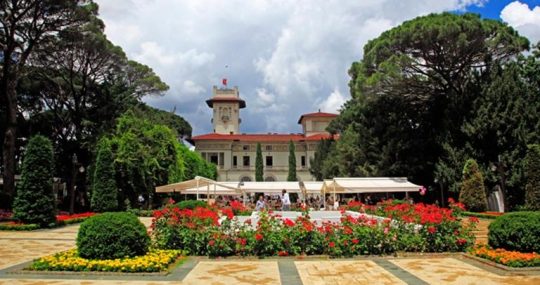
Palace Weddings on the Ottoman Dynasty
Shows and fireworks on the Golden Horn
That day the heart of Istanbul and of the empire was beating at this procession.
The participants wore their best outfits and carried their most valuable arms and pistols. Ahmet III was trying to show his power and wealth to his people with, this street parade instead of revealing his supremacy to the entire world in the battlefields. With the feasts and festivities he organized, with the mansions he had built during the Tulip Era and with all the luxury, he had changed the outlook of the capital city and ushered a new epoch in the Empire. The wedding day was a historic day for Istanbul. Everybody on the streets was happy. Joy was in the air. The streets were overcrowded. The windows were wide open. Faces beneath the veils were praying for the happiness of the bride and for the wealth, dashing look of the Sultan and his procession.
The procession was literally throwing money on the streets. People were stepping on each other to snap the coins. The procession arrived Eyiip, at the palace, prepared for Fatma Sultan. The procession participants disintegrated. Everyone had an entertainment to watch. Padishah and his wife went back to their palace. In the evening shows were staged on the Golden Horn, while fireworks were being lit on rafts.
Silahtar Ali Pasha dies in war
After this tiring and overwhelming wedding, which lasted for 25 days…
Silahtar Ali Pasha could not have Fatma Sultan. He had to send her back to the palace and wait for a while until she grows up and becomes a young lady. Silahtar Ali Pasha had to wait eight years for Fatma Sultan’s adolescence. He never had a chance to have a single private moment with her. Unfortunately, he died in Pclervaradin War before he could reunite with his fiancee, for whom he spent a fortune and organized feasts for weeks in order to gain supporters for his love. He became a martyr before he could realize his dreams.
Kosem Sultan marries her daughters
In the Ottoman Empire, the Sultans could marry before they were adolescents, but they could not share the same house with their spouses. This tradition was started by the well-known empress, Valide Kosem Sultan. For the sake of fortifying her position in the palace, Kosem Sultan married her minor daughters with the elite and reputable pashas of the time. Likewise, Ahmet 1 married her daughters Ayse Sultan and Fatma Sultan at the age of 13.
Sultan Ibrahim married Gevher Sultan at 3, Beyhan Sultan at 2. Emine, Ay§e and Safiye Sultans, the three daughters of Mustafa II, were married at 7. As mentioned above, Ahmet III had his daughters Fatma and Ummugulsum married at 5 and 2. Moreover, he married Atike Sultan at 12. Mustafa III married his son §ah Sultan at 3. This abnormality continued until the reign of MahmuL II, who pul an end to this situation and set the marriage time as the adolescence.
Multiple marriages
This weird tradition described above and the ongoing wars had a natural consequence. The sultans were widowed many times and were married more than once. The daughters of Ahmet I, Ayse, Fatma and Safiye, all married 6 times, which was a dynasty record. This record is followed by Safiye and Emine, daughters of Mustafa II, who married 4 times. So did Atike Sultan, daughter of Ahmet III.
Source: https://www.ensarislamoglu.com/palace-weddings-ottoman-dynasty/
0 notes
Photo

Palace Weddings on the Ottoman Dynasty
Shows and fireworks on the Golden Horn
That day the heart of Istanbul and of the empire was beating at this procession.
The participants wore their best outfits and carried their most valuable arms and pistols. Ahmet III was trying to show his power and wealth to his people with, this street parade instead of revealing his supremacy to the entire world in the battlefields. With the feasts and festivities he organized, with the mansions he had built during the Tulip Era and with all the luxury, he had changed the outlook of the capital city and ushered a new epoch in the Empire. The wedding day was a historic day for Istanbul. Everybody on the streets was happy. Joy was in the air. The streets were overcrowded. The windows were wide open. Faces beneath the veils were praying for the happiness of the bride and for the wealth, dashing look of the Sultan and his procession.
The procession was literally throwing money on the streets. People were stepping on each other to snap the coins. The procession arrived Eyiip, at the palace, prepared for Fatma Sultan. The procession participants disintegrated. Everyone had an entertainment to watch. Padishah and his wife went back to their palace. In the evening shows were staged on the Golden Horn, while fireworks were being lit on rafts.
Silahtar Ali Pasha dies in war
After this tiring and overwhelming wedding, which lasted for 25 days…
Silahtar Ali Pasha could not have Fatma Sultan. He had to send her back to the palace and wait for a while until she grows up and becomes a young lady. Silahtar Ali Pasha had to wait eight years for Fatma Sultan’s adolescence. He never had a chance to have a single private moment with her. Unfortunately, he died in Pclervaradin War before he could reunite with his fiancee, for whom he spent a fortune and organized feasts for weeks in order to gain supporters for his love. He became a martyr before he could realize his dreams.
Kosem Sultan marries her daughters
In the Ottoman Empire, the Sultans could marry before they were adolescents, but they could not share the same house with their spouses. This tradition was started by the well-known empress, Valide Kosem Sultan. For the sake of fortifying her position in the palace, Kosem Sultan married her minor daughters with the elite and reputable pashas of the time. Likewise, Ahmet 1 married her daughters Ayse Sultan and Fatma Sultan at the age of 13.
Sultan Ibrahim married Gevher Sultan at 3, Beyhan Sultan at 2. Emine, Ay§e and Safiye Sultans, the three daughters of Mustafa II, were married at 7. As mentioned above, Ahmet III had his daughters Fatma and Ummugulsum married at 5 and 2. Moreover, he married Atike Sultan at 12. Mustafa III married his son §ah Sultan at 3. This abnormality continued until the reign of MahmuL II, who pul an end to this situation and set the marriage time as the adolescence.
Multiple marriages
This weird tradition described above and the ongoing wars had a natural consequence. The sultans were widowed many times and were married more than once. The daughters of Ahmet I, Ayse, Fatma and Safiye, all married 6 times, which was a dynasty record. This record is followed by Safiye and Emine, daughters of Mustafa II, who married 4 times. So did Atike Sultan, daughter of Ahmet III.
Source: https://www.ensarislamoglu.com/palace-weddings-ottoman-dynasty/
0 notes
Photo










Ottoman Princesses named: Ayşe
Ayşe is the Turkish equivalent of the Arabic name A'isha, famous for being the name of the youngest wife of Prophet Muhammad. It is one of the most common names among Ottoman princesses and consorts.
#history#historyedit#ottoman history#ayse hatun daughter of mehmed i#ayse sultan daughter of bayezid ii#ayse humasah hanimsultan#ayse sultan daughter of murad iii#ayse sultan daughter of mehmed iii#ayse sultan daughter of ahmed i#ayse sultan daughter of ibrahim i#ayse sultan daughter of mustafa ii#ayse sultan daughter of ahmed iii#ayse durrusehvar hanim daughter of abdulhamid i#ayse sultan daughter of abdulhamid ii#durrusehvar sultan daughter of abdulmecid ii#ottomanladiesedit#princessesnames
1K notes
·
View notes
Text
International Known Queens & Empresses (4/?)
Haseki Hürrem Sultan










Daughter of Lisovsky (?)
Wife (Haseki Sultan) of Suleiman the Magnificent
Mother of Sehzade Mehmed, Mihrimah Sultan, Sehzade Abdullah, Sultan Selim II, Sehzade Bayezid, and Sehzade Cihangir
Grandmother of Ayse Hümasah Sultan, Sultanzade Osman (Mihrimah), Sultan Murad III, Sehzade Mehmed (Selim), Sehzade Abdullah (Selim), Sehzade Cihangir (Selim), Sehzade Mustafa (Selim), Sehzade Suleiman (Selim), Ismihan Sultan (Selim), Gevherhan Sultan (Selim), Sah Sultan (Selim), Fatma Sultan, Sehzade Orhan, Sehzade Osman (Bayezid), Sehzade Abdullah (Bayezid), Sehzade Mahmud (Bayezid), Mihrümah Sultan (Bayezid), Hatice Sultan (Bayezid), Ayse Sultan (Bayezid), and Hanzade Sultan (Bayezid)
11 notes
·
View notes
Photo
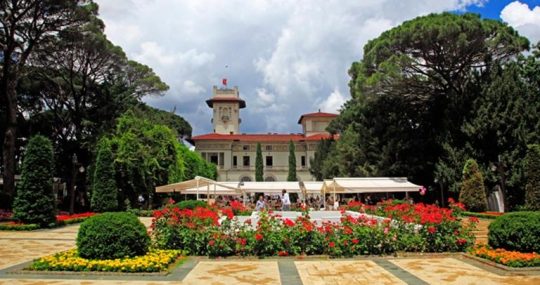
Palace Weddings on the Ottoman Dynasty
Shows and fireworks on the Golden Horn
That day the heart of Istanbul and of the empire was beating at this procession.
The participants wore their best outfits and carried their most valuable arms and pistols. Ahmet III was trying to show his power and wealth to his people with, this street parade instead of revealing his supremacy to the entire world in the battlefields. With the feasts and festivities he organized, with the mansions he had built during the Tulip Era and with all the luxury, he had changed the outlook of the capital city and ushered a new epoch in the Empire. The wedding day was a historic day for Istanbul. Everybody on the streets was happy. Joy was in the air. The streets were overcrowded. The windows were wide open. Faces beneath the veils were praying for the happiness of the bride and for the wealth, dashing look of the Sultan and his procession.
The procession was literally throwing money on the streets. People were stepping on each other to snap the coins. The procession arrived Eyiip, at the palace, prepared for Fatma Sultan. The procession participants disintegrated. Everyone had an entertainment to watch. Padishah and his wife went back to their palace. In the evening shows were staged on the Golden Horn, while fireworks were being lit on rafts.
Silahtar Ali Pasha dies in war
After this tiring and overwhelming wedding, which lasted for 25 days…
Silahtar Ali Pasha could not have Fatma Sultan. He had to send her back to the palace and wait for a while until she grows up and becomes a young lady. Silahtar Ali Pasha had to wait eight years for Fatma Sultan’s adolescence. He never had a chance to have a single private moment with her. Unfortunately, he died in Pclervaradin War before he could reunite with his fiancee, for whom he spent a fortune and organized feasts for weeks in order to gain supporters for his love. He became a martyr before he could realize his dreams.
Kosem Sultan marries her daughters
In the Ottoman Empire, the Sultans could marry before they were adolescents, but they could not share the same house with their spouses. This tradition was started by the well-known empress, Valide Kosem Sultan. For the sake of fortifying her position in the palace, Kosem Sultan married her minor daughters with the elite and reputable pashas of the time. Likewise, Ahmet 1 married her daughters Ayse Sultan and Fatma Sultan at the age of 13.
Sultan Ibrahim married Gevher Sultan at 3, Beyhan Sultan at 2. Emine, Ay§e and Safiye Sultans, the three daughters of Mustafa II, were married at 7. As mentioned above, Ahmet III had his daughters Fatma and Ummugulsum married at 5 and 2. Moreover, he married Atike Sultan at 12. Mustafa III married his son §ah Sultan at 3. This abnormality continued until the reign of MahmuL II, who pul an end to this situation and set the marriage time as the adolescence.
Multiple marriages
This weird tradition described above and the ongoing wars had a natural consequence. The sultans were widowed many times and were married more than once. The daughters of Ahmet I, Ayse, Fatma and Safiye, all married 6 times, which was a dynasty record. This record is followed by Safiye and Emine, daughters of Mustafa II, who married 4 times. So did Atike Sultan, daughter of Ahmet III.
Source: https://www.ensarislamoglu.com/palace-weddings-ottoman-dynasty/
0 notes